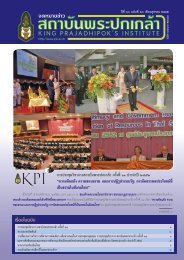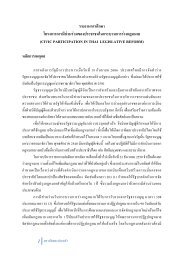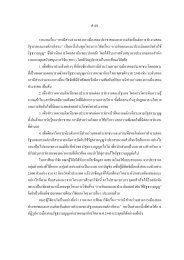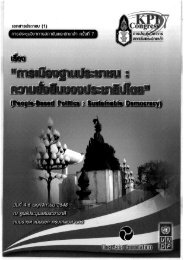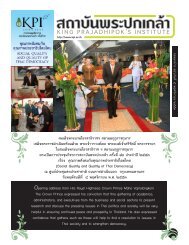SUFFiciENcy EcONOMy ANd GRASSROOtS DEvElOPMENt
SUFFiciENcy EcONOMy ANd GRASSROOtS DEvElOPMENt
SUFFiciENcy EcONOMy ANd GRASSROOtS DEvElOPMENt
Create successful ePaper yourself
Turn your PDF publications into a flip-book with our unique Google optimized e-Paper software.
The Meaning of Sufficiency Economy <br />
International Conference<br />
279<br />
Impact of Micro Credit on Women Empowerment – <br />
a Study in Mysore District, India<br />
<br />
<br />
<br />
<br />
<br />
<br />
<br />
Introduction<br />
The idea that eradication of poverty must be a central concern of public policy,<br />
has gained wide currency in current academic and public discourse on development.<br />
Time was when the focus used to be on the rate and pattern of growth, and on<br />
inequalities in distribution of income and wealth. Even as these continue to be<br />
important concerns, increasing attention is being given to the extent to which people<br />
in individual countries and the world at large are deprived of the minimum<br />
requirements for a long, healthy and fulfilling life.<br />
The idea is not new. In India it dates well back into pre-independence era -<br />
recall Naoroji’s book “Poverty and UN British Rule” and was prominent in the<br />
deliberations of the Congress Party. The National Planning Committee (NPC) report<br />
in fact spelt out in concrete terms the concept and content of minimum living<br />
standard. The 15th Indian Labour Conference (ILC) which deliberated on the basis<br />
for fixing fair wages also spelt out the constituents of a living wage. A committee on<br />
economic policy (headed by Nehru) appointed by the AICC suggested that assurance<br />
of a national minimum standard in respect of “all the essentials of physical and<br />
social well-being” to every family within a reasonable period of time” should be the<br />
practical goal of all schemes of development.<br />
The Constitutional provisions on the Directive Principles of State Policy,<br />
however it took a long time for government to define its developmental objectives<br />
and policies with reference to these principles. The first three Five-Year Plan<br />
documents saw sustained high rates of growth as the principal means to alleviate<br />
malnourishment, unemployment, illiteracy and other manifestations of poverty.<br />
There was much talk in political rhetoric and in policy pronouncements about<br />
reducing inequalities of income and wealth through land reforms, public ownership<br />
and control of key sectors, and progressive taxation. But with actual growth proving<br />
to be much slower than expected, and redistributive measures; proving to be



